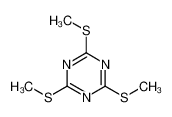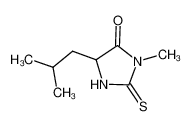

-
methyl isothiocyanate
CAS No.556-61-6
Formula:C2H3NS
Methyl isothiocyanate is the organosulfur compound with the formula CH3N=C=S. This low melting colorless solid is a powerful lachrymator. As a precursor to a variety of valuable bioactive compounds, it is the most important organic isothiocyanate in industry.
Formula
C2H3NS
Molecular Weight
73.1169
Exact Mass
72.9986
LogP
0.719
PSA
44.45
Synonyms
methylimino(sulfanylidene)methane
Methane, isothiocyanato-
isothiocyanatomethane
Methyl isothiocyanate
expand collapse
Appearance & Physical State
colourless solid
Density
1.069
Boiling Point
117-120ºC
Melting Point
30-36ºC
Flash Point
32ºC
Refractive Index
1.487
Water Solubility
7.6 g/L
Stability
Stable. Incompatible with strong oxidizing agents, alcohols, strong bases, amines.
Storage Condition
2-8ºC
Vapor Pressure
21 mm Hg ( 20 °C)
Related Compound Information
Copyright © 2015 MOLBASE All Rights Reserved.
ICP Shanghai 14014220
















